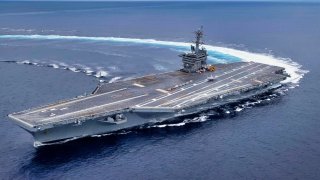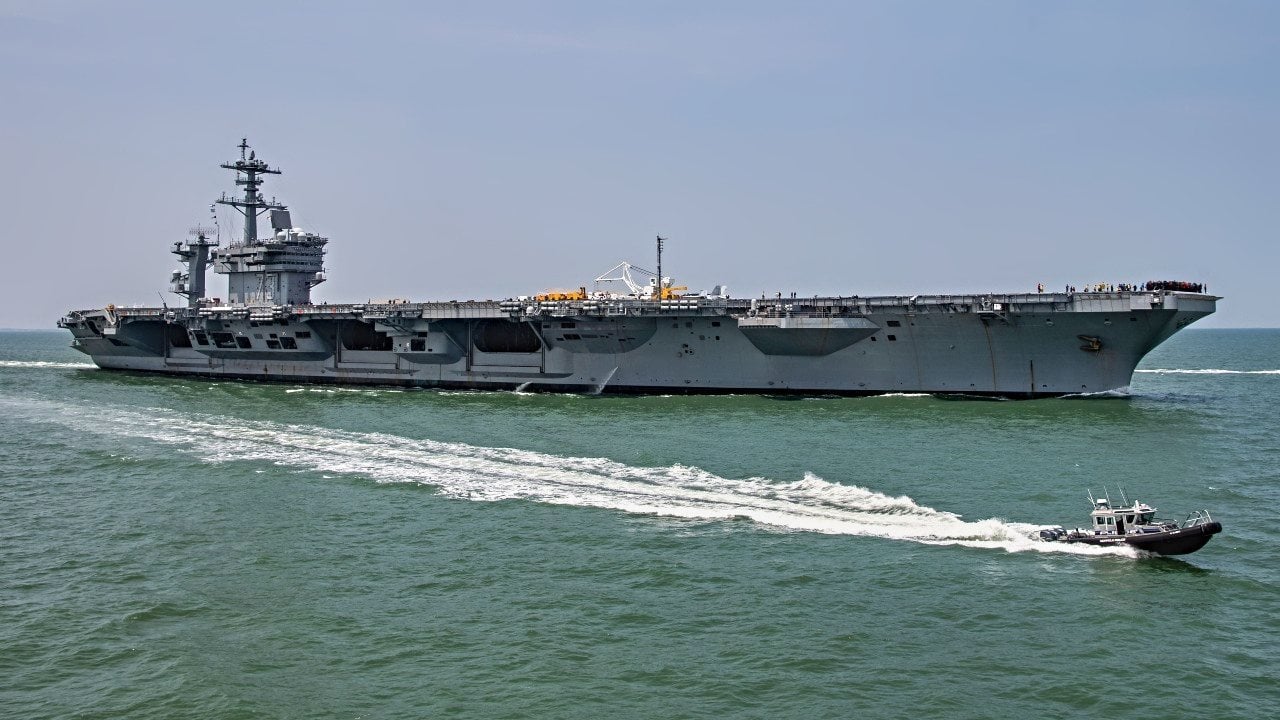Stavros Atlamazoglou

As tensions with China in the Indo-Pacific continue to rise, the U.S. Navy will likely deploy almost half of its aircraft carrier fleet into the region.
The move would aim to deter Beijing and encourage America’s allies and partners in perhaps the most important area of the world.
More Aircraft Carriers
Right now, there are three aircraft carriers in the region, with potentially two more heading there.
The USS Carl Vinson and USS Theodore Roosevelt are in the area of operations with their carrier groups. A couple of weeks ago, the two aircraft carriers took part in a large-scale exercise with the Japanese Navy in the Philippine Sea. The two aircraft carriers are expected to remain in the area of operations for the next few months.
The USS Ronald Reagan is also in the region, although in port in Yokosuka, Japan. In November, the aircraft carrier completed a six-month deployment in the Indo-Pacific. The flattop might be in port undergoing maintenance, but it can still deploy in the event of a contingency.
In addition, the USS Abraham Lincoln was seen heading to its homeport in San Diego on February 2 but left port three days later with a full complement. The aircraft carrier is part of the 7th Fleet, which is responsible for the Indo-Pacific area of operations, and is likely heading there.
Finally, the USS George Washington recently completed a mid-life refitting and a change of command. The aircraft carrier is expected to relieve the USS Roland Reagan in the upcoming weeks.

As such, it is likely that the Navy will have five of its 11 aircraft carriers in the Indo-Pacific at the same time.
This is a clear message to China as Beijing is becoming more assertive in the South China Sea and Taiwan. The situation around the latter is especially important as the Chinese leadership has made it clear that it seeks reunification with Taiwan through peaceful means but with war if necessary.
The U.S. Aircraft Carrier Fleet
By law, the Navy has to have 11 operational aircraft carriers. There have been some exceptions to that number with Congress’ permission, but the current number is 11. In that number, Congress doesn’t consider “light carriers,” such as amphibious warfare ships carrying F-35B Lighting II aircraft. The requirement stems from the geopolitical demands of U.S. foreign policy.
Congress has recognized that there are few things that can project power and policy more effectively than a floating city of 5,000 sailors carrying up to 100 combat aircraft. However, aircraft carriers come with some risk. The more expensive the warship—the USS Gerald R. Ford, the Navy’s newest carrier, costs $13 billion—the more careful the Navy has to be with it. The development of hypersonic missiles has made the deployment of aircraft carriers close to enemy positions precarious.
Right now, the Navy fields 11 carriers (one new Ford-Class and ten Nimitz-class), some of which are deployed, while others are undergoing refitting and maintenance in port.
No comments:
Post a Comment